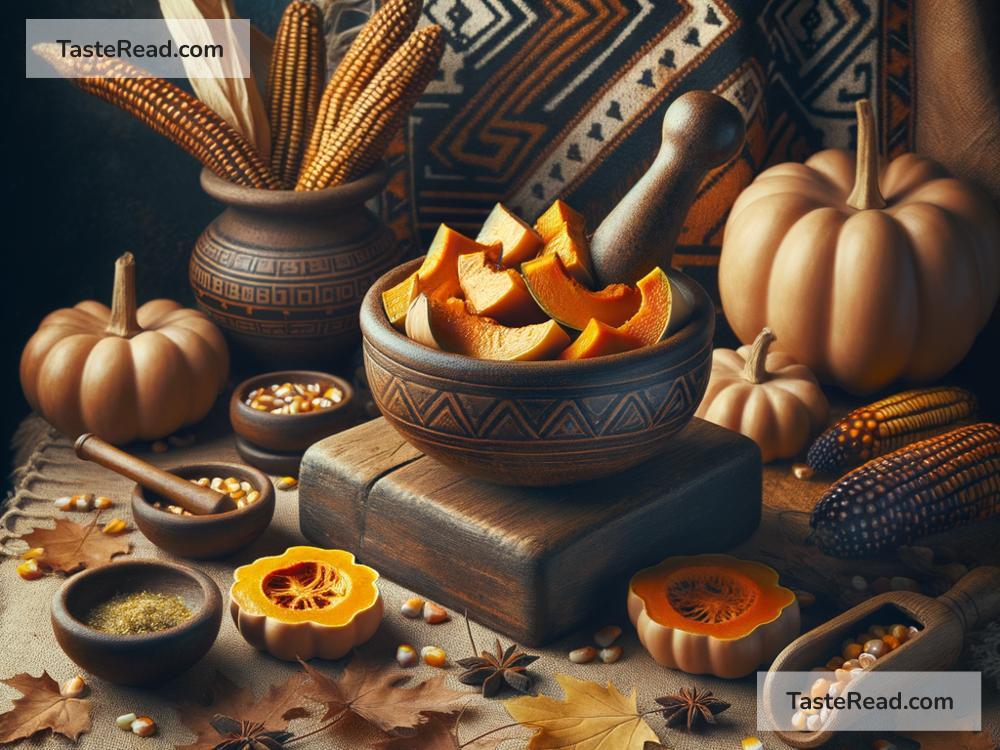The Historical Significance of Butternut Squash in Native American Cooking
Butternut squash is a popular vegetable today, often found in soups, roasted dishes, and holiday meals. But did you know that it has deep roots in Native American history? This humble squash wasn’t just food; it was a symbol of survival, tradition, and community. Native Americans played a significant role in cultivating and using butternut squash, and their cooking methods have influenced modern diets in many ways.
An Important Crop in Native American Agriculture
Butternut squash is part of a group of vegetables known as the “Three Sisters,” which includes corn, beans, and squash. These three plants were central to Native American agriculture. They weren’t grown separately but together in harmony. This method of planting is called companion planting, and it helped crops grow stronger and more efficiently.
Here’s how it worked: Corn grew tall, providing a natural support for climbing beans. Beans added nitrogen to the soil, which helped keep it nutritious for all the plants. Squash, with its large leaves, spread out along the ground. These leaves acted like a natural mulch, keeping the soil moist and shading out weeds. By growing them together, Native Americans ensured a steady supply of food and helped the ecosystem flourish.
Butternut squash specifically held an important place in this trio. It grows easily in different climates, stores well for long periods, and is packed with nutrients. This made it a reliable source of food, especially during harsh winters when other crops were scarce.
A Nutritional Powerhouse
Native Americans valued butternut squash for more than just its ease of cultivation. It was rich in vitamins, especially vitamin A, which supports eye health, and vitamin C, which boosts the immune system. It also provided carbohydrates for energy and fiber to aid digestion.
Because of its hard skin and ability to last for months without spoiling, butternut squash was perfect for feeding families through the winter. Native Americans often dried or roasted it to preserve it further, ensuring they always had food, even when fresh crops weren’t available.
How Butternut Squash Was Used in Cooking
Native Americans were incredibly resourceful in their cooking, using every part of the plants they grew. When it came to butternut squash, nothing went to waste. The flesh was cooked in a variety of ways: boiled, roasted, mashed, or added to stews. Its natural sweetness made it a comforting meal that could be enjoyed on its own or combined with other ingredients.
Seeds from the squash were roasted for snacks or ground into flour for baking. Even the blossoms weren’t discarded; they were sometimes used in soups or eaten fresh. This approach demonstrates the Native American philosophy of respecting nature and using resources wisely.
Butternut squash was also combined with corn, beans, and other wild ingredients native to the land. It might be cooked with honey for sweetness or mixed with meat for a hearty stew. These recipes were not just practical; they were a celebration of the bounty. Meals brought families and communities together and were often shared during gatherings.
More Than Just Food
In Native American communities, squash—including butternut squash—had cultural and symbolic significance. It was considered a gift from the earth, something to be respected and protected. Squash seeds were often saved and passed down to the next generation, ensuring that this vital crop would continue to provide nourishment.
Squash was also part of ceremonies and rituals. During harvest celebrations, the Three Sisters were honored as an example of how cooperation leads to abundance. Each sister—corn, beans, and squash—played a role in supporting the others, just as people in a community do.
The Legacy of Butternut Squash
Today, Native American cooking has influenced how we use butternut squash in modern kitchens. Many recipes, like roasted squash or squash soup, reflect traditional methods of cooking and preserving. Even the idea of pairing squash with corn and beans lives on in dishes like succotash, a popular side dish in American cuisine.
In addition, the concept of sustainability in farming—like companion planting with squash—is gaining attention again. Modern farmers are adopting techniques similar to those used by Native Americans, understanding how planting certain crops together can benefit the soil and ecosystem as a whole.
Butternut squash continues to remind us of the importance of respecting the earth, embracing seasonal foods, and learning from traditional practices. Every time we enjoy this bright orange vegetable, whether in a warm soup or a holiday casserole, we’re connecting to a long history of survival and community.
Conclusion
Butternut squash is more than just a tasty vegetable; it’s a symbol of resilience, resourcefulness, and respect for the environment. Native Americans cultivated it, cooked it, and valued it as part of their way of life. Their traditions, farming practices, and cooking methods have left a lasting impact on the way we use squash and other plants today.
As we enjoy butternut squash in our modern recipes, it’s worth remembering its rich history and the vital role it played in Native American communities. It’s not just a food—it’s a story of cooperation, sustainability, and gratitude for the gifts of the earth. So the next time you take a bite of butternut squash, think about the generations of people who worked with nature to bring this versatile vegetable into our lives.

